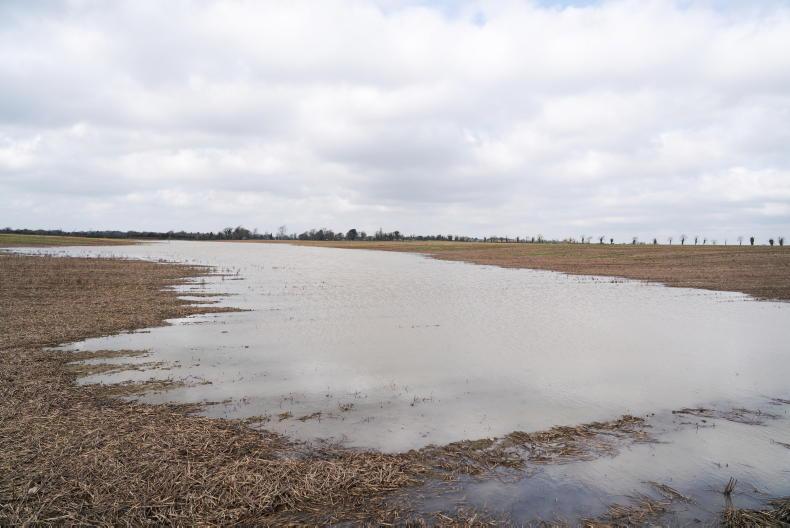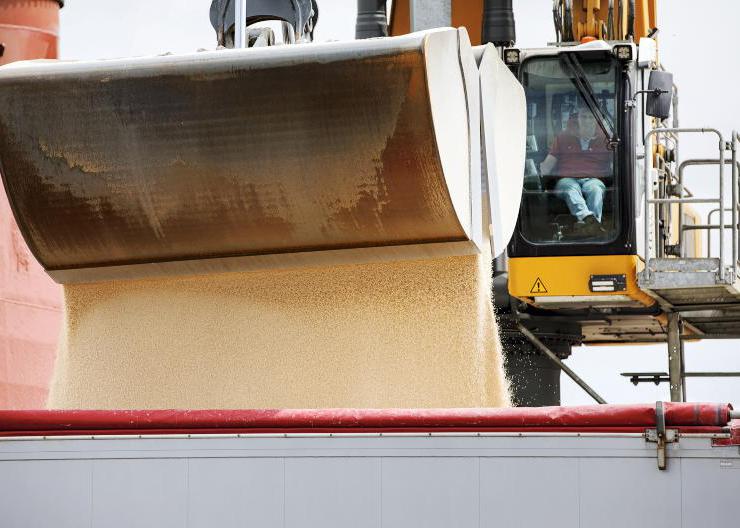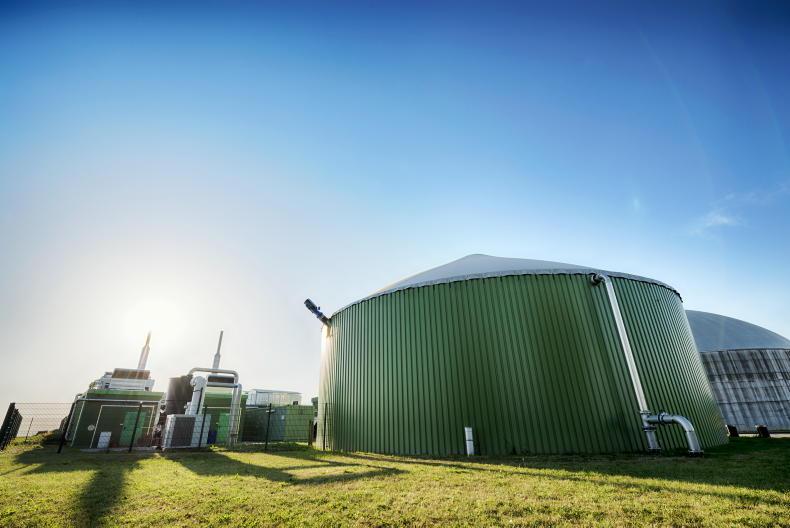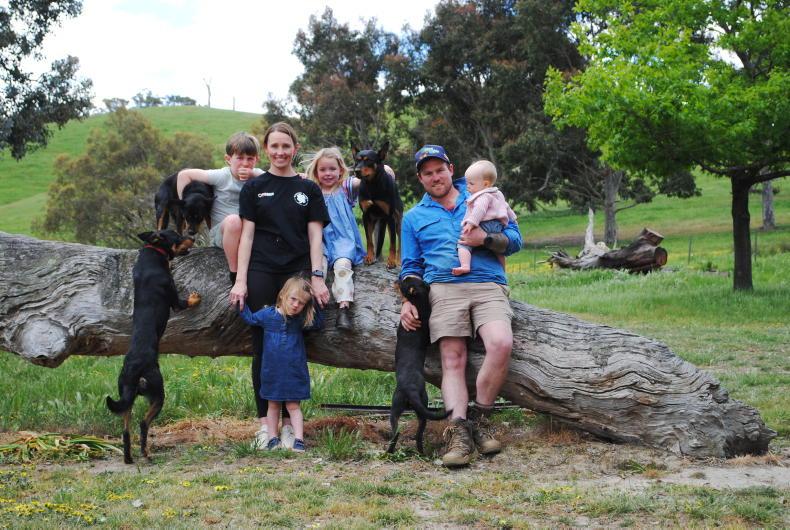Dairy: new cow quota inevitable
New restrictions on how many dairy cows a farm can carry are now inevitable. The recently announced ceiling for agricultural emissions by 2030 sets a target that is virtually impossible to achieve without rapid advancement of new technology, or a reduction in the size of the national herd.
While work on finding and implementing these new technologies such as feed additives and genetic advancements is ongoing, it is highly unlikely and indeed incompatible with the overall objectives of lowering emissions that farmers will be permitted to increase cow numbers.
The Irish dairy herd has been increasing in size at a rate of around 2% per year while the beef herd has been contracting slightly.
Overall livestock numbers have been increasing over the last 10 years.
If this is allowed to continue, the challenge facing agriculture to reduce its overall emissions just gets greater.
Report
Irish farmers have to reduce emissions by 5.847Mt of CO2 by 2030 and as the KPMG and Irish Farmers Journal report highlights, in the absence of breakthrough, oven-ready technology, this can only be achieved with a cut to the national herd.
Setting a limit on cow numbers will be the first step in this process. Incentivising farmers to cut cow numbers will be the next step.
Tillage: not clear what tillage farmers are expected to do
It is not clear what, if anything, tillage farmers are expected to do to help achieve the 25% emissions reduction. Land used for tillage has much lower overall emissions to begin with and most of the potential of this enterprise is for increased carbon storage rather than emissions reduction.
A higher area in tillage has the potential to reduce overall emissions if it were to displace intensive livestock production.
Reduced cultivation is one area that may be further incentivised, where practical. At its simplest, non-inversion and direct drill establishment systems require much less diesel per hectare for crop establishment. That means less fuel burned and less carbon released.
Less intensive cultivation also brings the benefits of slightly lower direct carbon loss or release from our soils.
Loosened soil lets in more oxygen which drives soil microbes to break down more of the organic matter with the associated loss of carbon dioxide. With this in mind, it is likely that we will see further incentivisation of non-plough systems.
If this is to happen, it should be done in association with other initiatives to add carbon back to soil, either through straw incorporation, catch cropping or slurry application from farms that may be caught by nitrates restrictions.
Sheep: void of information concerning farmers
At this stage, sheep farmers are well accustomed to falling under the radar in agricultural discussions, be it dialogue on market performance to recent deliberations on climate change.
The soundbites reverberating over the last week have focused on likely cuts to the country’s beef and dairy herds to meet the 25% emissions reduction target.
Many farmers are already under significant pressure given the sharp spike in input costs
It is understandable that sheep do not feature prominently in the debate given the level of emissions attributable to the sector are a fraction of beef and dairy sector output. It would be naïve to think, however, that sheep will remain under the radar and one would expect that the sector will be asked to commit to whatever changes are deemed necessary.
Herein lies the greatest concern for all sectors with a void of information and any plan on how the Government aims to meet these targets hugely concerning. In the absence of any semblance of clarity on emissions reduction targets speculation and misinformation are thriving.
Many farmers are already under significant pressure given the sharp spike in input costs, while many sheep farmers operate mixed enterprises and are facing pressure on more than one front.
Sheep farmers, like all sectors, are committed to measures that will provide environmental benefits. However, the first steps must be to identify what is required, the blueprint on how this will be achieved and the supports available will be key.
Beef: scale of task is mammoth
The scale of the task on the beef side of the house is huge. We are talking from horse to tractor transformation on farms.
The proven technologies are there to use but getting 100% adoption will be a different task.
It won’t happen without substantial supports. On the plus side, farmers when supported have followed policy in the past and given the low margins in the beef sector, farmers will have no choice but to conform to survive.
Personally, I don’t see us hitting targets without reducing numbers but the suckler sector is already on that pathway, reducing by 5% since 2018.
Earlier slaughter age will be key in hitting the target. Teagasc and ICBF have been looking at the effect that slaughter age will have on GHG emissions and they have shown that we can reduce emissions per animal by 3.6% for every month younger that the animal is slaughtered at.
Young bull beef has to come back into the conversation. Surely a climate-conscious consumer would look at bull beef if it had potentially 50% less emissions than a 29-month-old bullock.
It’s time for our processors to show some leadership and innovative thinking on this one.
Bull beef can be part of the solution.
Dairy: new cow quota inevitable
New restrictions on how many dairy cows a farm can carry are now inevitable. The recently announced ceiling for agricultural emissions by 2030 sets a target that is virtually impossible to achieve without rapid advancement of new technology, or a reduction in the size of the national herd.
While work on finding and implementing these new technologies such as feed additives and genetic advancements is ongoing, it is highly unlikely and indeed incompatible with the overall objectives of lowering emissions that farmers will be permitted to increase cow numbers.
The Irish dairy herd has been increasing in size at a rate of around 2% per year while the beef herd has been contracting slightly.
Overall livestock numbers have been increasing over the last 10 years.
If this is allowed to continue, the challenge facing agriculture to reduce its overall emissions just gets greater.
Report
Irish farmers have to reduce emissions by 5.847Mt of CO2 by 2030 and as the KPMG and Irish Farmers Journal report highlights, in the absence of breakthrough, oven-ready technology, this can only be achieved with a cut to the national herd.
Setting a limit on cow numbers will be the first step in this process. Incentivising farmers to cut cow numbers will be the next step.
Tillage: not clear what tillage farmers are expected to do
It is not clear what, if anything, tillage farmers are expected to do to help achieve the 25% emissions reduction. Land used for tillage has much lower overall emissions to begin with and most of the potential of this enterprise is for increased carbon storage rather than emissions reduction.
A higher area in tillage has the potential to reduce overall emissions if it were to displace intensive livestock production.
Reduced cultivation is one area that may be further incentivised, where practical. At its simplest, non-inversion and direct drill establishment systems require much less diesel per hectare for crop establishment. That means less fuel burned and less carbon released.
Less intensive cultivation also brings the benefits of slightly lower direct carbon loss or release from our soils.
Loosened soil lets in more oxygen which drives soil microbes to break down more of the organic matter with the associated loss of carbon dioxide. With this in mind, it is likely that we will see further incentivisation of non-plough systems.
If this is to happen, it should be done in association with other initiatives to add carbon back to soil, either through straw incorporation, catch cropping or slurry application from farms that may be caught by nitrates restrictions.
Sheep: void of information concerning farmers
At this stage, sheep farmers are well accustomed to falling under the radar in agricultural discussions, be it dialogue on market performance to recent deliberations on climate change.
The soundbites reverberating over the last week have focused on likely cuts to the country’s beef and dairy herds to meet the 25% emissions reduction target.
Many farmers are already under significant pressure given the sharp spike in input costs
It is understandable that sheep do not feature prominently in the debate given the level of emissions attributable to the sector are a fraction of beef and dairy sector output. It would be naïve to think, however, that sheep will remain under the radar and one would expect that the sector will be asked to commit to whatever changes are deemed necessary.
Herein lies the greatest concern for all sectors with a void of information and any plan on how the Government aims to meet these targets hugely concerning. In the absence of any semblance of clarity on emissions reduction targets speculation and misinformation are thriving.
Many farmers are already under significant pressure given the sharp spike in input costs, while many sheep farmers operate mixed enterprises and are facing pressure on more than one front.
Sheep farmers, like all sectors, are committed to measures that will provide environmental benefits. However, the first steps must be to identify what is required, the blueprint on how this will be achieved and the supports available will be key.
Beef: scale of task is mammoth
The scale of the task on the beef side of the house is huge. We are talking from horse to tractor transformation on farms.
The proven technologies are there to use but getting 100% adoption will be a different task.
It won’t happen without substantial supports. On the plus side, farmers when supported have followed policy in the past and given the low margins in the beef sector, farmers will have no choice but to conform to survive.
Personally, I don’t see us hitting targets without reducing numbers but the suckler sector is already on that pathway, reducing by 5% since 2018.
Earlier slaughter age will be key in hitting the target. Teagasc and ICBF have been looking at the effect that slaughter age will have on GHG emissions and they have shown that we can reduce emissions per animal by 3.6% for every month younger that the animal is slaughtered at.
Young bull beef has to come back into the conversation. Surely a climate-conscious consumer would look at bull beef if it had potentially 50% less emissions than a 29-month-old bullock.
It’s time for our processors to show some leadership and innovative thinking on this one.
Bull beef can be part of the solution.










SHARING OPTIONS